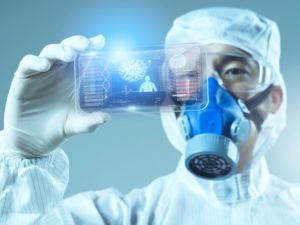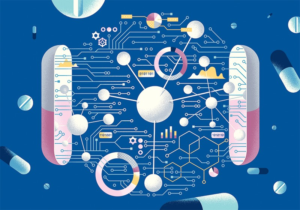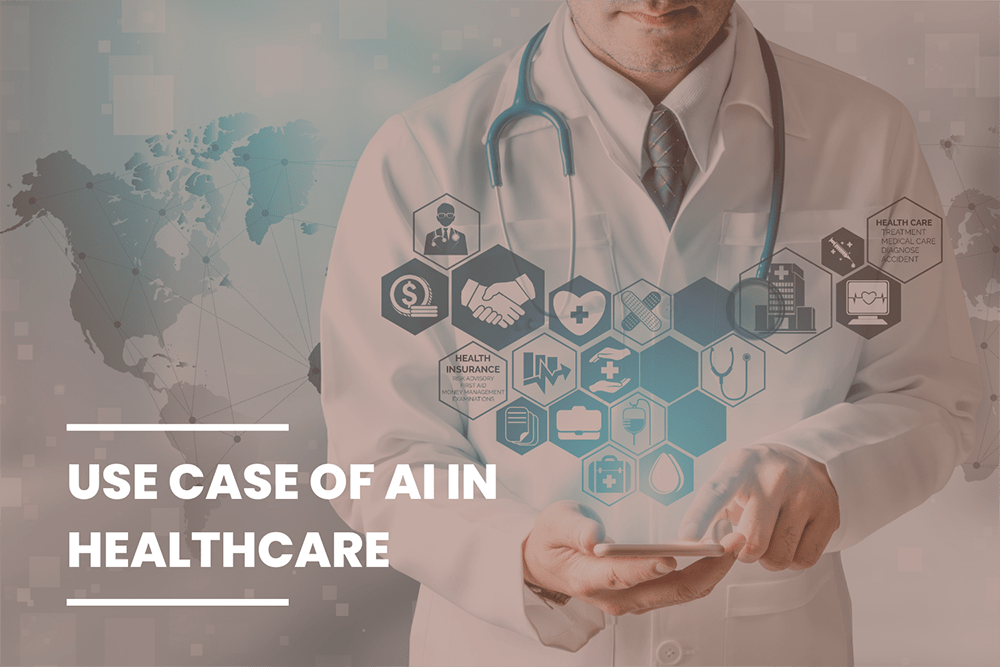As COVID-19 continues to have an influence on the world, improving healthcare through artificial intelligence (AI) is more important than ever. AI has helped to transform the healthcare business, and PwC predicts that the AI market for healthcare applications will grow from $663.8 million in 2014 to $6.7 billion in 2021. This rising demand is correlated with a significant growth in data complexity and quantity.
In this post, we will see the use cases of AI in healthcare.
AI has many use cases in the field of healthcare. Some of them are as discussed below:
Patient Prescreening

AI may provide value even before a patient arrives at a medical facility to seek care. Prescreening may now be done using questionnaires or online symptom checkers like WebMD. A renowned medical publication says that, in addition to posing leading questions that may create bias, these online symptom checks can have a broad range of accuracy. For example, in 2015, Harvard collaborated with Boston Children’s Hospital to examine the prognoses of online symptom checkers. The findings indicated substantial flaws: among 23 online symptom checks, correct advice was delivered just 58% of the time. AI has the potential to solve this issue.
Through extended speech and text-based communication, AI can improve patient prescreening by offering a more user-friendly experience than typical prescreening questionnaires. Through machine learning, AI can also discover new patterns and more correctly identify patients’ symptoms. Text- or voice-based artificially intelligent chat systems may replicate the competence of a real-life healthcare practitioner far better than a predetermined, static survey. Natural language processing (in which computers recognize text patterns) allows a potential patient to communicate symptoms in speech or text, much as they would to a physician. The patient and AI agent will pose questions to one other, replicating a real-life physician-patient dialogue.
Patient Intake and Triage

Patient intake and triage may be wasteful processes, and this is another possible area for AI to be used. Medical crises may be extremely stressful, and seeing a doctor typically necessitates time-consuming paperwork. Filling out this vital paperwork during an emergency might be difficult, but artificial intelligence can aid with patient intake and triage by employing chatbots or voice assistants to swiftly acquire required information from patients and decide the proper next steps.
When adopting AI for intake, patient data is automatically digitized. The digital data will enable more efficient scheduling algorithms to connect patients with the best doctor. AI algorithms might potentially utilize digital patient intake data to evaluate if a patient should wait to visit a specialized doctor or whether they require the most immediate treatment possible. For example, patient X may have arrived before patient Y, but owing to the nature of the diseases, patient Y must be examined first. Emergency room wait times in the United States range from two hours in Nebraska to more than 14 hours in Puerto Rico. Using an AI intake system might reduce ER wait times while also improving patient care.
Using AI in patient intake can give a less stressful patient experience while utilizing medical personnel’s time most effectively. Healthcare organisations can also profit from lower patient data collecting expenses by eliminating the data entering necessary to digitize medical records.
Diagnosis and Medical Imaging
Medical diagnosis is one of the most well-known uses of AI in healthcare. Because machines are well suited to handle unusual occurrences such as uncommon illnesses, diagnosis and medical imaging are good use cases for AI. They are better at sophisticated pattern detection on a larger range of abnormalities than most human healthcare practitioners.
Medical imaging and diagnosis are both extremely complicated issues. Traditionally, feature creation and engineering (transforming data to represent or capture concepts as input for a model) have been utilized, but this needs a subject matter expert (SME). Deep learning (DL), a sophisticated kind of AI, is, on the other hand, an appealing answer for tough problems needing human-like “thinking,” such as medical imaging and diagnosis. This artificial intelligence technology helps medical institutions to reduce the amount of time highly experienced employees spend examining medical pictures, allowing personnel to tackle more difficult problems and treat more patients.
Drug Discovery

COVID-19 has illuminated the vaccine development process. For the past year, the world has been working toward a vaccine, and while great progress has been achieved, the vaccine and medication discovery procedures are incredibly laborious, expensive, time-consuming, and sometimes ineffective.
As a result, drug makers are increasingly turning to AI technologies such as DL to design and test novel medications. Because of the vast variety of chemical combinations, developing new medications necessitates the analysis of massive volumes of data (or what is known as the chemical space). AI overcomes this issue by using its capacity to perform very well with enormous volumes of data.
This capability results in a higher number of authorized pharmaceuticals in a faster, less expensive procedure with more research and development efficiency. Indeed, Moderna, one of the firms developing a COVID-19 vaccine, has been known to use AI in the vaccine research process.
Preventive Healthcare
What if we could take actions to prevent an illness from manifesting and shift the focus from reactive to preventative? Preventative care refers to any treatment or process that protects against future health problems. Preventive care is now restricted to treatments such as routine physicals, vaccinations, dental cleanings, and so on. There is a chance to use AI applications’ predictive capabilities to improve present preventative care.
Many industries, including industrial, automotive, and aerospace, rely heavily on AI technologies for predictive maintenance. Similarly, in healthcare, wearable fitness and medical gadgets like the Apple Watch, Fitbit, Garmin, and others may function as sensors to aid with preventative treatment. These gadgets natively enable data including heart rate, physical activity, diet, VO2, and sleep. These gadgets can now measure blood pressure, blood sugar, and weight via add-ons. The data acquired by these wearable gadgets has the potential to transform preventative healthcare by predicting health concerns before they arise. The massive amount of data gathered by these sensors might be utilized to create analytical models that forecast certain illnesses. Real-time wearable sensors might communicate data through these models, warning users when they reach a threshold that necessitates physician preventative treatment. Their wearable data might be shared with the doctor for a more in-depth medical knowledge, resulting in better care and less time spent on patient medical symptoms and history.


